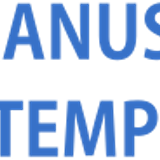An Integrated Approach for Revisiting Basin-Scale Heavy Oil Potential of The Central Sumatera Basin
Abstract
Keywords
Full Text:
PDFReferences
Aadland, A. J. & Phoa, R. S. K., 1981. Geothermal Gradient Map Of Indonesia: Indonesian Petroleum Association.
Akita, H., Kimura, Z. & Matshusita, A., 2017. Complete Genome Sequence of Ureibacillus thermosphaericus A1, a Thermophillic Bacillus Isolated from Compost. American Society for Microbiology (ASM), 5(38), pp. 1-2.
Carnell, A., Butterworth, P., Hamid, B., Livsey, A., Barton, J. & Bates, C. , 1998. The Brown Shale of Central Sumatra: A Detailed Geological Appraisal of A Shallow Lacustrine Source Rock, Indonesian Petroleum Association, pp. 51-69.
Courteney, S., Cockcroft, P., Lorentz, R., Miller, R., Ott, H.L., Suhendan, A.R. & Wight, A.W.R., 1991. Introduction, Central Sumatra Exploration and Production History, and Bibliography, Indonesian Petroleum Association, pp. 1-15, A1-A4.
Curtis, C., Kopper, R., Decoster, E., Guzman-Garcia, A., Huggins, C., Knauer, L., Minner, M., Kupsch, N., Minares, L.M., Rough, H. & Waite, M., 2002. Heavy-oil reservoirs. Oilfi eld Review, pp. 30-51.
Eubank, R. T. & Makki, A. C., 1981. Structural Geology of The Central Sumatra Back-arc Basin, Indonesian Petroleum Association.
Fitris, F. (2020) Personal Communication. Senior geologist, expert in Central Sumatra Basin geology.
Hartono, B., Zajuli, M., Subroto, E. & Pangestu, A., 2020. Biomarker Characteristic of Kelesa Oil Shale as Evidence of the Source of Organic Matter, Depositional Environment, and Maturity Interpretation, Indonesian Petroleum Association.
Head, I. M., Jones, D. M. & Larter, S. R., 2003. Biological activity in the deep subsurface and the origin of heavy oil. Nature, Volume 426, p. 344–352.
Inameta, 2006. Indonesia - Basin Summaries. Jakarta: The Gateway.
Katz, B. J. & Mertani, B., 1989. Central Sumatra - A Geochemical Paradox, Indonesian Petroleum Association.
Kenyon, C. S., Roberti, K. J., De Matharel, M. & Hughes, M. W., 1976. Geothermal Gradient Map Of Indonesia: A Progress Report, Southeast Asia Petroleum Exploration Society (SEAPEX).
LEMIGAS, 2020. Kajian Potensi Minyak Berat (Oil Sands) dan Bitumen di Cekungan Sumatera Tengah: PPPTMGB “LEMIGAS”, R&D Agency.
Macgregor, D. S., 1995. The Exploration Signifi cance of Surface Oil Seepage: An Indonesian Perspective. ., Indonesian Petroleum Association.
McKinsey & Company, 2020. Energy Insights. [Online] Available at: https://www.mckinseyenergyinsights.com [Accessed December 2020].
Mertosono, S. & Nayoan, G.A.S., 1974. The Tertiary Basinal Area Of Central Sumatra, Indonesian Petroleum Association.
Muin, A., 2014. Data Cadangan Produksi Migas: pre sented at “Ketahanan Energi Nasional: Tantangan dan Solusi untuk Pemerintah Mendatang” Seminar.
Nugraha, F., Winant, R., Zaelani, B., Massewa, D.A. & Rasyid, I.F., 2019. Steam Injection Huff and Puff Using Key Well Identifi cation Method in the Batang Field, Indonesian Petroleum Association
Petroleum Resources Management System (PRMS), 2011. Guidelines for Application of the Petroleum Resources Management System: Petroleum Resources Management System.
Santos, R. G., Loh, W., Bannwart, A. C. & Trevisan, O. V., 2014. An Overview of Heavy Oil Properties and Its Recovery and Transportation Methods. Brazilian Journal of Chemical Engineering, 31(3), pp. 571 - 590.
Science & Technology, 2019. Science & Technology: Central Sumatra Basin. [Online] Available at: https://sciencetechnology3583.blogspot.com/2019/04/central-sumatra-basin.html [Accessed February 2019].
Seifert, W. K. & Moldowan, J. M., 1980. Paleore construction by Biological Markers, Indonesian Petroleum Association.
Speight, J., 2019. Heavy-oil Recovery and Upgrading. Laramie, WY, USA: Gulf Professional Publishing.
Syahputra, A., 2020. Oil Saturation Log Prediction Using Neural Network In New Steamfl ood Area, Indonesian Petroleum Association.
Williams, H. H., Kelley, P. A., Janks, J. S. & Christensen, R. M., 1985. The Paleogene Rift Basin Source Rocks of Central Sumatra, Indonesian Petroleum Association.
Yi, X., 2008. Steam Flooding Field Fault Reactivation Maximum Reservoir Pressure Prediction Using Deterministic And Probabilistic Approaches. Perth, Australia, SPE
DOI: https://doi.org/10.29017/SCOG.44.1.493

This work is licensed under a Creative Commons Attribution-NonCommercial-NoDerivatives 4.0 International License.






